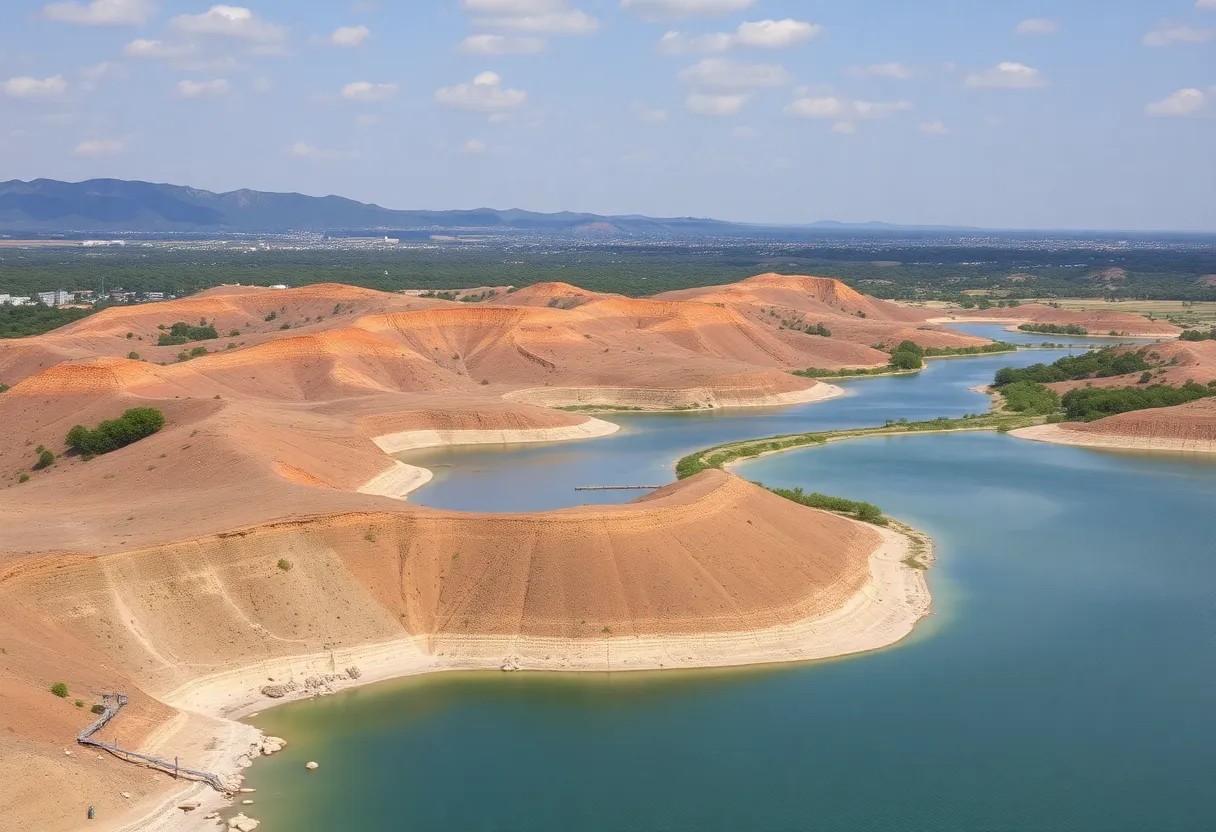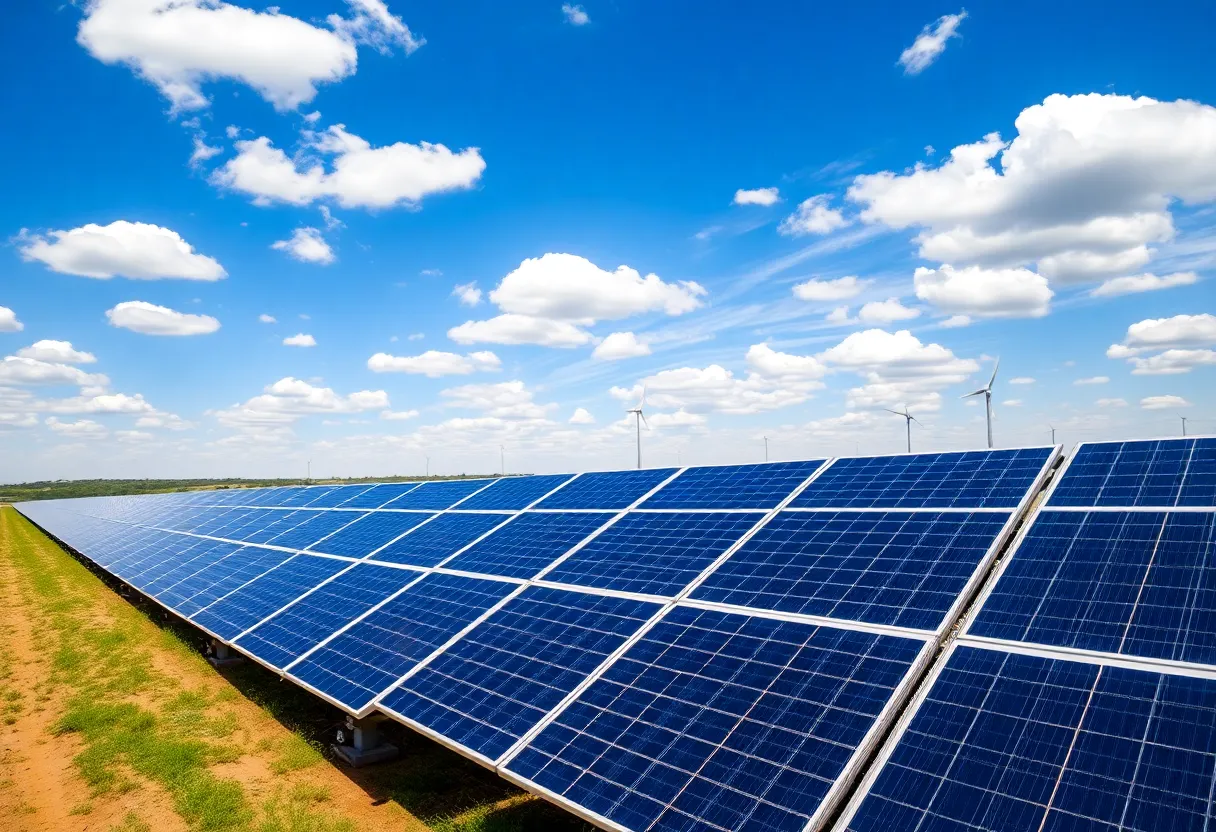News Summary
San Antonio is facing significant water security issues due to persistent drought and aging infrastructure. As the city grapples with reduced water supply, candidates for mayor are not prioritizing water concerns, leading to heightened public anxiety. Recent federal funding cuts have exacerbated the situation, impacting public health services. The city is currently in discussions for a $1 billion annual investment in water infrastructure, while the Edwards Aquifer and local lakes are at dangerously low levels. Community and legislative efforts are underway to address these challenges through innovative solutions.
San Antonio Faces Urgent Water Security Concerns Amid Drought and Infrastructure Challenges
San Antonio is currently grappling with serious water security challenges that have become a hot topic of concern among residents and local officials alike. Many citizens feel that without reliable access to water, other pressing issues such as crime and housing become irrelevant. There is a growing recognition that adequate water supply is integral to the overall well-being and development of the city.
The race for mayor is heating up, yet candidates have been somewhat quiet on the subject of water security. A recent survey has highlighted that many of them haven’t prioritized this crucial issue in their responses. While some candidates, like Adriana Rocha Garcia, have stood out for their approach to governance that focuses on the people and their needs, the overall sentiment is that water issues need immediate attention.
Complicating matters further, recent cuts to federal funding have put a strain on public health infrastructure in San Antonio. This has led to reductions in essential services, such as vaccination clinics, which adds another layer of complexity to the community’s challenges. According to the San Antonio Water System (SAWS), the city has lost over 21 billion gallons of water due to aging infrastructure and persistent drought conditions.
At the state level, lawmakers are currently debating whether to allocate a significant $1 billion annually for water infrastructure projects aimed at bolstering water supply and addressing the city’s urgent needs. The discussions are split between two major focus areas: finding new water sources, like desalination, and repairing the aging infrastructure that includes countless leaky pipes throughout the city.
As it stands, the Edwards Aquifer, which is crucial for San Antonio’s water supply, is currently over 40 feet below average levels. Additionally, nearby Medina Lake is alarmingly low, operating at just over 2% capacity. Canyon Lake isn’t faring much better, clocking in at approximately 47.6% capacity, leading to closed boat ramps and mandatory water cutbacks. These statistics clearly emphasize the dire state of water resources in the region.
In response to these challenges, the Texas Water Fund has been established, seeding $1 billion for future water initiatives. Further legislative proposals are being discussed to find a way to secure additional funding. Experts estimate that the state might need to invest around $154 billion over the next 50 years to adequately address the pressing water supply and infrastructure requirements.
This dialogue about water funding has revealed a divide among lawmakers, with some focusing on immediate needs while others emphasize the importance of preventive maintenance measures. One innovative idea under consideration is the creation of a “Texas Water Grid,” which would streamline water transportation from areas with surplus supplies to those experiencing shortages.
SAWS has been proactive in diversifying its water sources to reduce dependency on the Edwards Aquifer. Currently, there are nine active supply projects aimed at securing more water. The organization’s CEO claims that San Antonio is ready for new developments, despite ongoing drought fears. However, the controversial Vista Ridge Pipeline project has sparked debates regarding its environmental implications and overall costs, revealing the delicate balance between water security and ecological integrity.
As experts continue to emphasize long-term planning for water resource management, it becomes evident that San Antonio is making strides in diversifying its water supply, despite its historical reputation of being water-poor. SAWS is also committed to reducing water loss, believing customer cooperation is key to conserving water during these dry periods.
Currently, the city remains under Stage 2 watering restrictions, although some officials are advocating for stricter measures due to worsening drought conditions. As regional drought issues continue to escalate, city officials are acknowledging the pressing need for comprehensive water management strategies to ensure that San Antonio can thrive in the face of these challenges.
Deeper Dive: News & Info About This Topic
HERE Resources
San Antonio Burger Week Returns with a Great Cause
China Accuses U.S. NSA of Cyber Attacks During Asian Winter Games
Cody Balmer Denied Bail After Arson Attack on Governor’s Residence
San Antonio’s Tay-K Conviction Marks a Turning Point
Alamo Heights Recognized as 4th Best Place to Live in Texas
San Antonio Protests Erupt Over Michale Graves Concert
University Faces Visa Challenges for International Students
UTSA University Faces Visa Revocations for International Students
The Trump Administration Targets State Climate Policies with Executive Order
US Defense Secretary Proposes Military Base in Panama
Additional Resources
- Houston Chronicle
- Wikipedia: Water Security
- Express News
- Google Search: Texas water infrastructure projects
- Axios
- Google Scholar: SAWS water management
- Express News
- Encyclopedia Britannica: Edwards Aquifer
- Express News
- Google News: San Antonio drought







